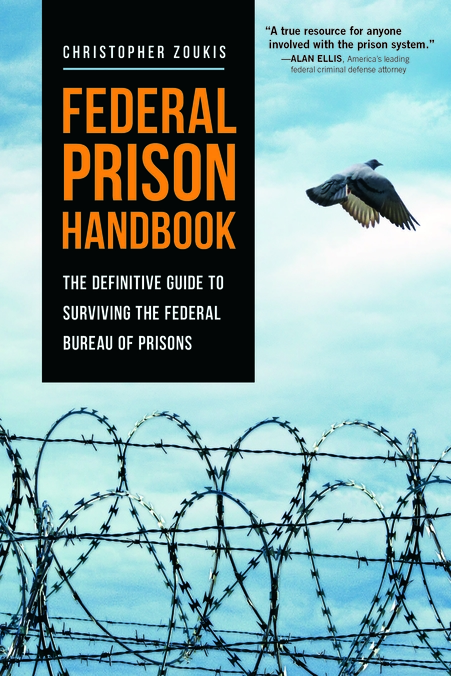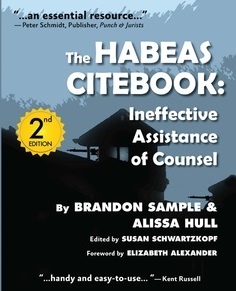California Court of Appeal: Trial Court Misconstrued Elements of Implied Malice Theory of Provocative Act Murder Under Current Law and Reverses Denial of Petition for Resentencing
The Court of Appeal for California, Fifth Appellate District, held that petitioner Tramell Vernon Taylor was entitled to resentencing on his conviction for first-degree murder because the trial court misconstrued the elements of the applicable offense and could not find petitioner guilty under a valid theory of murder.
Background
Between December 5 and December 6 of 2000, Taylor, Daryl McCoy, and Dwayne Richardson discussed and carried out a robbery of several men at a nearby motel, one of which was a suspected drug dealer from a rival gang. At the time, Kendall M., Shavon S., and Tyrone J. were all in Room 4 in the motel. Upon being warned that there were several men in the motel parking lot that looked like “they might be gearing up for something,” Kendall opened the door and shots were fired. Kendall, who ran to the bathroom and later escaped out of the bathroom window, was shot in the left arm, right arm, and abdomen, but he survived. The person who shot him was described as wearing dark clothing with a mask or hood over his face. McCoy, one of the robbers, was fatally shot in the left chest.
Subsequent to the shooting, extensive ballistic evidence was collected from the scene and introduced at trial. This evidence included two .45-caliber unexpanded bullets that were found in the parking lot, an expanded 9mm projectile slug was found outside the adjacent Room 3. In Room 4, where the shooting occurred, officers observed numerous bullet strikes and holes in the wall. Eight 9mm expanded shell casings and four 9mm bullets were removed from the scene. All 9mm shell casings were fired from the same gun, and all 9mm bullets were fired from the same gun. An expanded bullet recovered from McCoy’s body was not fired from any of the firearms that were located at the scene.
On June 27, 2001, Taylor and Richardson were both convicted of conspiracy to commit robbery (Count 1) and first-degree murder of McCoy (Count 2). Taylor was ultimately sentenced to an indeterminate term of life without the possibility of parole for Count 2, with a concurrent 12-year sentence imposed for Count 1.
On July 12, 2019, Taylor filed a petition for resentencing pursuant to California Penal Code § 1172.6 (formerly § 1170.95). The trial court summarily denied the petition without providing a statement of reasons; however, after the Court of Appeal reversed and remanded, the trial court held an evidentiary hearing with respect to both Taylor’s and Richardson’s § 1172.6 petitions.
At the February 21, 2024, hearing, the trial court identified the issue as “whether either [Taylor] or Richardson would be found guilty as to the crimes charged under current law.” The prosecution argued that, although McCoy was not killed by a bullet fired by Taylor, he was still guilty under the felony-murder rule as a major participant in the robbery who acted with reckless indifference to human life and that Taylor committed a provocative act which caused return fire that killed McCoy. Taylor conceded that he was a major participant in the robbery but argued that he did not act with reckless indifference to human life and that the evidence presented at trial was not clear as to whether he was the provocateur for purposes of the provocative act theory of murder.
The trial court denied Taylor’s and Richardson’s petitions in a lengthy written order that was recited on the record.
In the order, the trial court stated that “[petitioner] … can now only be held accountable for the murder of McCoy as an aider and abettor to the robbery, or under the [p]rovocative [a]ct [d]octrine, if [petitioner] personally acted with malice by being a major participant who acted ‘with reckless indifference to human life’ so that each [of petitioner’s] own personal intent to kill can be applied” and concluded that “[petitioner] w[as] convicted of murder under the [p]rovocative [a]ct [d]octrine because either Petitioner Taylor or Richardson were one of the shooters, McCoy was not the sole provocateur of his own death and it [wa]s clear that [petitioner was] a major participant … who acted with reckless indifference to human life when they participated in the incident which [led] to the death of McCoy, as they were well aware of the particular dangers posed by the nature of the crime of robbery of a drug dealer from a rival gang.” Therefore, the trial court found beyond a reasonable doubt that Taylor (and Richardson) could still be convicted of the murder of McCoy under the provocative act doctrine even after the amendments to California Penal Code §§ 188 and 189, which became effective on January 1, 2019.
Taylor timely appealed the trial court’s denial of his petition.
Analysis
The issues on appeal were whether the trial court misunderstood the elements of the murder conviction under current law and whether there was sufficient evidence to support the finding that Taylor acted with reckless indifference to human life to apply the felony murder rule to his conviction.
The Court noted that effective January 1, 2019, California Senate Bill 1437 (“SB 1437”) modified the substantive law of murder in two ways. People v. Curiel, 538 P.3d 993 (Cal. 2023).
First, the bill narrowed the scope of the felony-murder rule “so that a ‘participant in the perpetration or attempted perpetration of a [specified felony] in which a death occurs’ can be liable for murder only if ‘[t]he person was the actual killer’; ‘[t]he person was not the actual killer, but, with the intent to kill, aided, abetted, counseled, commanded, induced, solicited, requested, or assisted the actual killer in the commission of murder in the first degree’; or ‘[t]he person was a major participant in the underlying felony and acted with reckless indifference to human life.’” People v. Arellano, 550 P.3d 1073 (Cal. 2024).
Second, the bill “eliminate[d] liability for murder as an aider and abettor under the natural and probable consequences doctrine” by requiring that, “except in cases of felony murder, ‘a principal in a crime shall act with malice aforethought’ to be convicted of murder.” Curiel, quoting § 188, subd. (a)(3). Now, “‘[m]alice shall not be imputed to a person based solely on his or her participation in a crime.’” Id.
In addition, SB 1437 provided a procedure for those previously convicted of a qualifying offense to seek relief where the substantive changes in the law affect the person’s conviction. Id.
“If the court determines the petitioner has made a prima facie showing, the court must issue an order to show cause and hold a hearing to determine whether to vacate the murder conviction,” the Court explained. § 1172.6, subds. (c), (d)(1). At the hearing, “the burden of proof shall be on the prosecution to prove, beyond a reasonable doubt, that the petitioner is guilty of murder” under the amended §§ 188 and 189. § 1172.6, subd, (d)(3).
The Court stated that the provocative act doctrine arose as an alternative to felony-murder liability in circumstances where the killing was committed by a third party who was not involved in the perpetration of the underlying felony. People v. Washington, 402 P.2d 130 (Cal. 1965); People v. Gilbert, 408 P.2d 365 (Cal. 1965). In 2009, the California Supreme Court suggested that a murder conviction under the provocative act theory requires proof of an individual defendant’s own mental state. People v. Concha, 218 P.3d 660 (Cal. 2009). “A murder conviction under the provocative act doctrine … requires proof that the defendant personally harbored the mental state of malice, and either the defendant or an accomplice intentionally committed a provocative act that proximately caused an unlawful killing. A provocative act is one that goes beyond what is necessary to accomplish an underlying crime, and is dangerous to human life because it is highly probable to provoke a deadly response.… Malice [can] be implied if the defendant commits a provocative act knowing that the conduct endangers human life and acts with conscious disregard of the danger.” People v. Gonzalez, 278 P.3d 1242 (Cal. 2012).
Consequently, the Court found that there are two essential elements of the provocative act doctrine of murder. “First, for the provocative act doctrine to apply, the defendant or a surviving accomplice must commit a life-endangering provocative act, and a third party must kill in response to that act. Second, the defendant, whether the provocateur or not, must have acted with a mens rea sufficient to support a conviction for murder.” Further, the Court explained that “to be liable for implied malice murder, the [accomplice] must, by words or conduct, aid the commission of the life-endangering act, not the results of that act. The mens rea, which must be personally harbored by the [accomplice], is knowledge that the perpetrator intended to commit the act, intended to aid the perpetrator in the commission of the act, knowledge that the act is dangerous to human life, and acting in conscious disregard for human life. Where [such] … act is a shooting, the [accomplice] must know the perpetrator intended to shoot at the victim, intended to aid the perpetrator in the shooting, know the shooting was dangerous to life, and act in conscious disregard for life.” People v. Reyes, 531 P.3d 357 (Cal. 2023).
Turning to the present case, the Court noted that although the trial court’s imprecise language and inclusion of inapplicable boilerplate text made “it difficult to discern the legal basis for [its] ruling,” the trial court’s finding “suggests [it] determined [Taylor] was guilty of murder under a felony-murder theory.” However, the Court concluded that the determination that Taylor was guilty of provocative act murder under a felony-murder theory was legally erroneous.
The Court stated that none of the trial court’s findings regarding Taylor’s actions in the commission of the robbery pertained to the act of initiating the gun battle. “Under the provocative act doctrine, it is the [gun battle], and not merely the [robbery], which serves as the life-endangering act that permits a finding of implied malice,” the Court stated. Therefore, the Court concluded that the trial court’s finding that Taylor “participated in the robbery with reckless indifference to human life does not equate to finding that Taylor, as a non-provocateur accomplice, aided and abetted the provocative act of murder with implied malice.” To do so, the trial court was required to find that “Taylor knew Richardson intended to shoot at Kendall and/or his associates, intended to aid Richardson in the shooting, knew the shooting was dangerous to life, and acted with conscious disregard for life.”
Since the trial court’s decision reflected that it misunderstood the legal requirement of the offense, the Court found that it is “unclear whether the trial court would have reached the same result using correct legal standards.”
Conclusion
Accordingly, the Court reversed the order denying Taylor’s petition and remanded the case for further proceedings consistent with its opinion. See: People v. Taylor, 108 Cal. App. 5th 849 (2025).
Writer’s note: This is an excellent case for explaining the provocative act murder and the mens rea now required under California law for felony-murder conviction. Anyone interested in this topic is encouraged to read the Court’s full opinion.
As a digital subscriber to Criminal Legal News, you can access full text and downloads for this and other premium content.
Already a subscriber? Login
Related legal case
People v. Taylor
| Year | 2025 |
|---|---|
| Cite | 108 Cal. App. 5th 849 (2025) |
| Level | State Court of Appeals |





